How My Experiences with ADHD in Different Workplaces Led to a PhD and Training Programmes for Businesses and Schools

Written by Steve Ollington
ADHDer studying the pros and cons of ADHD in the workplace, with 19 years in digital marketing, and more recently running ADHD training.
I’m Steve Ollington, and I’m currently undertaking a PhD at Swansea University, supervised by Professor Brian Garrod, focusing on ADHD in the workplace. My research journey started with a personal observation: despite having a consistent skill set and high level of experience in my profession, I noticed that my performance varied significantly depending on the workplace environment. In some settings, I thrived; in others, I struggled to achieve the same level of productivity and job satisfaction. This discrepancy led me to examine how different workplace environments interact with ADHD traits, not just in terms of challenges, but also in enabling the often-overlooked strengths associated with ADHD.
Observing the Role of Environment in My ADHD Performance
In some roles, I was given autonomy and flexibility, which allowed me to excel. I had the freedom to approach tasks creatively, was trusted by managers, and felt supported by colleagues who understood different thinking styles. In these settings, I could harness the strengths that come with ADHD, for example innovative thinking and alternative (but effective) problem-solving. My performance was high, and I felt truly engaged in my work.
In other workplaces, however, I encountered rigid structures and strictly enforced processes with little flexibility. There was often limited understanding of alternative approaches to work, and I felt pressured to conform to methods that didn’t align with how I function best. This rigid structure amplified the challenges of ADHD, while stifling my ability to bring my strengths to the forefront. In these environments, I found myself struggling as a result.
Recognising the Potential of ADHD Strengths in the Workplace
Through these contrasting experiences, I realised that while my ADHD challenges remained constant, my ability to utilise my strengths was significantly influenced by the environment, including the acceptance of my differences by those around me. Some workplaces allowed me to maximise my capabilities, while others hindered them. This insight led me to pursue a PhD, focusing on ADHD in professional environments. Rather than just examining the difficulties faced by ADHD employees, I wanted to highlight the strengths and explore the specific workplace conditions that either foster or inhibit these strengths.
Research supports the notion that ADHD brings unique strengths. Dr Heiner Lachenmeier’s book ADHD and Success at Work, for instance, describes how people with ADHD often have a “wider breadth of association” due to a reduced filtering of incoming information, which enhances creativity and problem-solving abilities.
Research by Dr Nancy Doyle on neurodivergence in the workplace, combined with studies on creativity and imagination by White and Shah demonstrate that ADHD individuals can excel in environments that embrace cognitive diversity. Creativity, for instance, is often heightened in ADHD individuals due to the way they process information, thinking beyond traditional boundaries. However, these strengths can only be fully realised in workplaces that are flexible, supportive, and open to alternative working styles.
Dr Edward Hallowell also discusses this in his book Driven to Distraction at Work, noting that ADHD can fuel high energy, hyperfocus, and enthusiasm when supported in the right way. Additionally, Prof Amanda Kirby and Theo Smith, in The Power of Neurodiversity at Work, as well as Leanne Maskell in ADHD Works at Work, advocate for environments that understand and embrace neurodiversity, highlighting the benefits employees with ADHD can bring to the workplace.
Developing Targeted ADHD Training Courses
This studying inevitably led to increasing my own understanding of ADHD and its impact on my work, and the more I learned, the more it became evident that many workplaces lack the necessary understanding and support for neurodivergent employees. Despite increased emphasis on diversity and inclusion, neurodivergence (including ADHD) is still very often misunderstood, with much of the current training being very broad and general, not focusing enough on individual conditions. I saw, and experienced, the need for specific training to address not only the challenges but also the strengths associated with ADHD, and the resulting understanding from workplace peers who might have neurotypical only expectations of skills like communication and approaches to tasks.
This realisation led me to transform my PhD literature review into two targeted training courses. The first course is designed for businesses, specifically aimed at training managers, HR, and colleagues of people with ADHD, focuses on understanding ADHD from a balanced perspective, covering how ADHD employees think differently, the areas in which they may need support, and how workplaces can harness their unique strengths. It encourages flexibility, trust, and space for creativity, which are key to enabling ADHD employees to thrive.
The second course is geared towards educators, providing ADHD training for teachers, TAs, and SEN staff, to equip them with the knowledge to reassure ADHD children and teenagers on how ADHD doesn’t have to limit them as they grow up, and that in fact they their ADHD also brings strengths, such as creative thinking and resilience. By emphasising these positive traits, educators can help ADHD students see their future as one filled with potential and opportunity.
The Diversifying the Curriculum Conference 2025
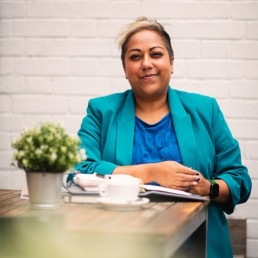
Written by Bennie Kara
Co-Founder of Diverse Educators
At Diverse Educators’ Diversifying the Curriculum Conference, Hannah Wilson started the event by reminding us all that the work on ensuring curriculum is deep, broad and diverse is not done yet. Our speakers certainly reminded us just how much we can do to make sure that we are constructing a curriculum for all.
Christine Counsell’s opening keynote was joyful to listen to, not least in part due to her incredible depth of awareness and knowledge about the humanities curriculum. She connected effective learning to effective curriculum design and spoke about how thoroughness is possible and how thin unconnected content does not serve the needs of our children. She reminded us that the humanities are replete with story and that each lesson should have children longing for the next one. In her keynote, she recognised the need to work hard to deliver unfamiliar content but also how that hard work pays off when students have experienced language, symbols and narratives repeatedly throughout the curriculum from year 3 onwards in her words meaning comes from relationships with everything else and that the curriculum should be a series of constant bursts of energy fueled by indirect residents and anticipation.
In Emily Folurunsho’s session, we were treated to an in-depth look at Black British history and how important it is to ensure that British students learn about Black British history and not just the history of Black Americans. She was clear in her message that the first time that students encounter a black figure from history should not be through the lens of enslavement. She talked us through three themes that allow us as educators to give a fuller picture of Black British history as possible. She talked about figures from the pre-Anglo-Saxon past, from the Tudor age and from the Victorian age. It is important, she said, that we study Windrush and its legacy, but that we also contextualise Windrush in light of broader race relations in the mid 20th century. She talked compellingly about how Black British history has a connecting influence in terms of providing representation and presence for black students, touching on her own history in Britain and how she personally learned about Black history. She went on to explore how Black British history is challenged in its presence and its validity. To ensure that Black British history is truly embedded into the curriculum, we must seek sources from Black voices and we must refer to Black historians.
In David Bartlett’s session on the global boyhood initiative, we learned about the need for healthy masculinity and healthy emotions in boys and how that goes hand in hand with healthy gender expectations. He explored what healthy gender expectations look like and how to facilitate young people in breaking free from limitations. In his session he explored gender differences and gender stereotypes, asking: what is nature and what is nurture? He highlighted the idea of pink and blue roles in the development of gender identity and responsibility.
Dana Saxon’s session on roots and relevance started with Dana’s personal experience of history as a subject. She talked about how history was not for her in her early experiences and how she felt that her history had been erased. It was only as an adult that she started family history research and that gave her a sense of personal ownership of her story and the ability to create and curate the family archive. She explored the disconnect in history teaching, asking who decides which histories are more important and invited us to consider who is remembered and who this suggests matters. She was clear in her message that history has been distorted, disfigured and destroyed and that erased histories disempower people. She stressed the need to find untold stories and the stories of migration because there are empowering stories hidden deep in our archives. It is a way, she said, of connecting the dots and answering the questions: how did we get here and why does it matter?
Samantha Wharton spoke about Black British literature. She referenced her work and resources on Leave Taking by Winsome Pinnock. Focusing on this text, she explored the context of Pinnock’s play and how teachers can take a cross curricular approach in delivering lessons on it. The text, according to Wharton, is a valuable insight into shared immigrant experiences, family dynamics, the generation gap and matriarchal figures, as well as themes of education and what is deemed sub normal. She encouraged us to go beyond the classroom when exploring literary texts like Leave Taking. She referenced the work of Lit in Colour, outlining the statistics on representation in literature and explored how a simple audit activity can develop thinking about diversity in the curriculum.
Krys McInnis’ session touched on the journey between diversifying the curriculum and decolonizing the curriculum. He asked us to consider positionality in approaching this process, stressing that all people have lived experience and we all have different starting points when undertaking curriculum reform. He spoke compellingly about redistributing power, centring the voices of the colonised and challenging the notion of who holds knowledge and how we make space for marginalised voices and epistemologies. He told us that unlearning is needed and that we need to be willing to adjust, not just approach the process of decolonization as a road map or a checklist so that we can say we are done. In essence he asked us to rethink knowledge and also how language is used today to define power and perspective.
I finished my day listening to Shammi Rahman talking about how RE can help us embrace unity. It was shocking to hear that 500 secondary schools report delivering 0 hours of RE and that led Shammi to ask the question: what is the value of RE for staff, for students, for communities and for parents especially when it can prevent misunderstandings and misconceptions around people and their faiths. Shammi helped us understand that children may be missing out on the opportunity to talk and listen as it is such a central skill in RE and that, in doing so as teachers, we can help them avoid generalisations about groups of people. She stressed that it is difficult to have broad knowledge but that we do need to make time to read and to become comfortable with being uncomfortable in delivering certain aspects of RE. We cannot let our fear of offending people or getting names wrong prevent us from teaching RE lessons that are outside of our own experiences. She went on to talk about what difference it may have made to her peers if they knew about the contributions of her community to the national story. She stressed the need to use quality resources, referencing the work of Mary Myatt and also the work of Nikki McGee. McGee’s work on Black history tours to enrich the curriculum is an excellent source of support for teachers. She finished by reminding us that the beauty of RE is in its intersections.
David Lowbridge-Ellis’s closing keynote reminded us that working in diversity, equity and inclusion is often an unpaid, frustrating and thankless job. He also reminded us that we need to articulate our commitment to the work and to keep bringing about the message of why this work is important. He referenced the work of Dr Rudine Sims Bishop in 1990 on the importance of windows, mirrors and sliding doors as a key metaphor. He pointed out that the choices we make in the resources and examples we put in front of our students may result in students feeling like they belong in the classroom. That it is crucial to make sure that there are windows into the world outside of students so that they are developing a broad cultural capital. He too referenced the work of Lit in Colour. But he returned to his driver and one that perhaps we should all pay attention to, the need to have children we are serving to have a better school experience then we did. It is incredibly important that our values show that we are committed to this work. And it is not just about the curriculum, he spoke about accountability and how some people have the opportunity to shape and influence recruitment, to shape development priorities and equality’s objectives. This is a large sphere of influence.
It was not possible to attend every single session, as much as I would have liked to. But there were common threads and I hope that you can see them in this summary. The Diversifying the Curriculum Conference remains as relevant as it did five years ago because as we said at the start, the work is not yet done.
At The Reverse Mentoring Practice, we want to have BIG, game-changing conversations
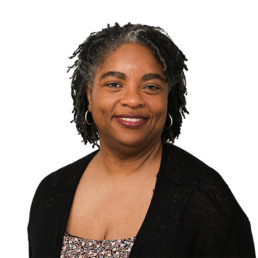
Written by Stacy Johnson MBE
Chief Scientific Officer and Founder of The Reverse Mentoring Practice. Stacy is a leading voice on the frontier of justice, inclusion and belonging work. She helps organisations to re-imagine, re-engineer and reset their culture. Her groundbreaking work on reverse mentoring and practice supervision is making waves. Stacy is #TriniToDeBone
We want to talk about reverse mentoring in situations where you’re trying to improve inclusion, as an approach to retaining staff, and who may also be dealing with barriers to inclusion, who may find themselves in tricky situations and circumstances related to their protected characteristic. We do not want to have superficial conversations.
We want to celebrate the lived experiences of people through the magic of reverse mentoring, whether it is informal or formal, whether it’s programmatic in your organisation, or ad hoc.
We want to help you listen differently, to spark change in your organisations by empowering you and your senior leaders to move forward with cultural humility to ignite equitable action.
We sat down with Stacy Johnson MBE, our Chief Scientific Officer & Founder at Reverse Mentoring Practice who shared her insight and research on reverse mentoring. In the online seminar Stacy also held a question-and-answer session where one member asked:
Q: How can we get the people that would benefit from a mentoring relationship interested?
Stacy: Whether you are a very senior person or a junior person, you should periodically pause and assess.
Ask yourself: Am I being mentored? Am I mentoring anybody else? And if one of those things is not true, you need to make that right. You should always, at any point whether it’s formally or informally, be mentoring or being mentored.
It’s about reminding people on both sides of the equation that there is benefit from being a mentor and being mentored.
As far as those who are already converted, we should be more open about what mentoring is.
For example, the way I got a reverse mentor was because an amazing young man said to me, “will you mentor me?” And I actually felt a bit of horror. In fact, I remember saying to him, “I’m a terrible mentor! Let’s just meet and have some coffees!”
And then eventually, after several of those meetings, I said, “actually, will you reverse mentor me?”
I guess that’s because I had never been formally trained as a mentor. Some people have the impression that you have to be really knowledgeable, and you have to have all the answers. The idea of being formally asked to be a mentor is probably quite intimidating to even the most amazing leaders.
For me, I just want to have interesting conversations with this amazing young man and share ideas about things that had worked for me, things that I’d seen had worked for other people who were similar to him, or different to him. As soon as he labelled that mentoring, I panicked. So, it might be the same the other way around.
Maybe for the people who are not yet converted, it’s about offering it up as an informal relationship and connecting with somebody who is more junior to you, or more senior to you. Maybe that pulls them in, they begin to see the benefits and then they can happily then label it mentoring. They will be extolling the virtues of mentoring, and you won’t have to convince them.
If you want to know more, join us at the Diverse Educators webinar where we will explore how we unlock the potential of reverse mentoring and cultural humility in driving personal growth and organisational success. The recording will also be available to playback afterwards.
Challenging Hair Discrimination Through Racial Narratives, Industry Knowledge on the Economics of Hair and Counter Literacy Equality, Diversity Strategies
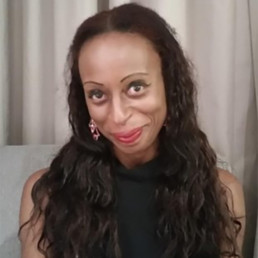
Written by Dr Pamela Odih
Pamela is a senior lecturer in Sociology within the Sociology department at Goldsmiths University of London. Her research specialises human rights communication and the significance of me/space to the regulation of subjects and construction of gendered subjectivity with specific regards to organisational analysis and educational policy.
On 27th October 2022 the Equality and Human Rights Commission (EHRC) published new guidance aimed at ensuring that: “Pupils should not be stopped from wearing their hair in natural Afro styles at school” (EHRC 2022). The guidance is supported by resources that are “endorsed by World Afro Day and the All-Party Parliamentary Group for Race Equality in Education” and are designed to assist school leaders in ensuring that “hair or hairstyle policies are not unlawfully discriminatory” (ibid.).
In October 2024, having successfully applied for a British Academy and Leverhulme Trust small grant, I began my empirical study which is entitled “Challenging Hair Discrimination Through Racial Narratives, Industry Knowledge on the Economics of Hair and Counter Literacy Equality, Diversity Strategies”. Research Focus: The proposed research is partly an impact analysis of the application of EHRC resources, into school policies and the responses of school leaders to the suitability and adaptability of these policies.
An additional focus of the study is to envisage the scope and form of guidance on anti-race-based hair discrimination that informs young people as consumer citizens in respect to their cultural heritage of hair sculpture as an expression of racial belonging. I am currently interviewing UK and USA NGOs, charities and human rights legal practitioners to ascertain the impact of their activism in respect to PSHE and citizenship studies educational policy and race equality legislation.
If you have such involvement in this subject area, I would greatly appreciate interviewing you. Please, in this regard, contact me at Goldsmiths University, where I am a Sociology Senior Lecturer. The outcome of the research is scheduled to be disseminated in academic journals and the creation of an open access teaching resource to support consumer citizenship secondary school lessons.
I am also collaborating with the spoken poet Rider Shafique to create three long-form poems for presentation at scheduled multiculturalism festivals within the academy; we also envisage co-creating and illustrating a series of children’s books. I’ll post again as the research progresses and shall provide some interim findings which I hope will be useful for your respective projects.
Reimagining Your Curriculum: Steps to Embrace Diversity and Equity
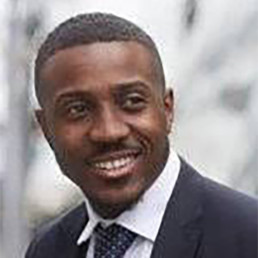
Written by Krystian McInnis
Krystian McInnis is a Religious Education consultant, advisor, and researcher specialising in decolonising and diversifying Religious Education. With a career that spans the public, private, and charity sectors, he brings extensive national and international experience in curriculum diversification and decolonisation. As the Co-Founder of Reimagining Education, Krystian is dedicated to creating a more inclusive and equitable educational system where everyone feels seen, heard, and that they belong.
In recent years, educators worldwide have begun to scrutinise their curricula for underlying biases and exclusions, calling for a wider range of diverse materials to enhance every student’s learning journey (Kara 2022). While many teachers hold a strong commitment to equality, their curricula still lack diversity, and often fail to reflect the multiplicity of perspectives that make up our increasingly globalised world. As societies grow more diverse, educational institutions face increasing pressure to adapt curricula that genuinely reflect the communities they serve. For many educators, “reimagining” the curriculum to embrace diversity and equity means moving beyond mere rhetoric or the adding of decorative slides; it requires a transformative approach that at its epicentre embraces inclusion, broadens perspectives, and fosters a deeper understanding of global issues. This ultimately brings to the forefront an essential question: how can educators reimagine and enrich their curricula to ensure all students see themselves represented, where they can feel seen, heard and believe that they belong.
The Need for Change
In May 2020, following the senseless killing of George Floyd Jr, amidst a time of isolation and solitude, many individuals began questioning not only their personal beliefs but also the societal structures that perpetuate inequality. The mere stance of not racist, no longer suffice, saw many people make an active shift towards reconsidering their position to one of anti-racist, intentionally seeking ways to disrupt and remove the barriers many face on a daily basis worldwide both from a personal and an institutional perspective.
With this being the landscape, many teachers decided they wanted to make meaningful changes and begun questioning their lessons and curriculums, exploring the inclusivity of them and to what extent they were representative of the diverse nature of the country and communities they served. Nabagereka and Melzer (2022) argue that for children and young people to fully engage with their learning, they need to see themselves reflected in what they are learning about. Furthermore, they argue that by not feeling represented in the curriculum, this can be disempowering and discouraging, negatively impacting pupil wellbeing, stopping them from achieving their full potential. Therefore, diversifying the curriculum extends beyond a mere nice to have, but rather critical for student care.
Engaging All Learners: The Imperative of an Equitable Curriculum
A diverse and inclusive curriculum plays a fundamental role in developing cultural competence, empathy, and critical thinking in students. It allows all students to see themselves and others within their learning, not only fostering a sense of belonging but also supporting with the much-needed work on social cohesion too. Banks (2015) argues that inclusivity in education not only enriches the learning experience for students from marginalised communities, but also benefits all students by broadening their worldviews and preparing them for a multicultural society. Without a deliberate effort to incorporate diverse perspectives, we risk perpetuating a curriculum that reflects an extremely narrow and predominantly Eurocentric, White male-dominated narrative.
Whilst the uptake has been slow, and efforts lagging within many institutions, the call for a more diverse curriculum has been clear. The Commission on Race and Ethnic Disparities (CRED) report recommended curriculum reforms to increase the representation of Black, Asian, and Ethnic Minority communities, arguing that more inclusive content could help reduce racial disparities (CRED, 2021). Additionally it asserted that a curricula reflecting a range of experiences, histories, and perspectives contributes to a learning environment that is more engaging, inclusive, and better prepares students for citizenship in a multicultural world.
Limitations in Traditional Curricula
It would be remiss of me however, to not state there are barriers and limitation. The first step however, in building a diverse and equitable curriculum is acknowledging the limitations in traditional approaches. Traditional curricula often exhibit an over-reliance on Western-centric authors, perspectives, and historical events, particularly within the humanities. Within this we have seen the intentional omitting of stories, contributions and voices of cultures, far too often classified as ‘other’ (Au, 2009). Therefore, a curriculum audit is a way which can identify gaps, guiding us to understand where imbalances and exclusions may exist. I would recommend that when starting an audit to critically assess a curriculum, it is vital to consider the following questions:
- Are there voices, narratives, or cultural perspectives missing from my curriculum?
- Does the curriculum offer diverse perspectives within each subject area?
- How does the material encourage students to engage critically with the world around them?
Building an Inclusive Curriculum
Creating an inclusive curriculum involves more than the mere adding of decorative diverse images, but rather relies on three core elements: representation, relevance and reflective engagement.
Representation: Critical to an inclusive curriculum is the reflection of a wide range of perspectives, including those from various racial, cultural, socioeconomic, and gender groups. It is important to remember, diversification does not remove existing literary masterpieces by White authors, nor does it erase Western history, or remove Europe from the map in geography lessons as some might suggest, but rather broadens the amount of narratives being explored. For example, presenting African nations not merely through a lens of poverty, but also in terms of their rich resources and complex histories offering a fuller picture of the individual countries. In doing so, it helps to present a balanced narrative of events allowing students to engage with an in-depth, more nuanced understanding of the world around them.
Relevance: Schemes of work should be culturally and contextually relevant to students’ lives. Whilst the communities practitioners serve now might be monocultural, it is imperative that they are preparing their students for the wider, multicultural Britain they live in, and the globalised world around them. Critical to a diverse and inclusive curriculum is one that not only engages students academically but also fosters critical consciousness, helping students to understand, question, and reshape the world they live in, allowing for them to question and formulate their own worldviews. By doing so, we can at least begin to develop a curriculum that resonates with students’ identities and experiences, enabling them to connect their learning to broader societal issues.
Reflective Engagement: As reflective practitioners, it is of upmost importance that we encourage students to reflect too, with a robust diverse curriculum allowing for this to take place. An inclusive curriculum encourages students to question dominant narratives and think critically about issues of power, privilege, and inequity. Ultimately, through reflection, we create the space for students to explore and understand their own positionality too. Within this, students move from being merely passive recipients of knowledge to active participants in uncovering and understanding complex social dynamics (Au, 2009).
Conclusion: Embracing Diversity as a Journey, Not a Destination
Creating an inclusive curriculum is not a one-time task but an ongoing journey. While some may fear the time commitment required for these changes, it’s important to remember that small steps—such as integrating diverse materials or adapting lesson plans—are all meaningful progress. By embracing diversity iteratively, we can gradually build curriculums that reflects the values of equity and inclusion.
Note, resistance from stakeholders may arise, especially when changes challenge long-standing traditions. However, professional development and collaboration with colleagues is crucial for this work to be successful, whilst also not overwhelming ourselves or the curriculums already in place.
Whilst the journey might be difficult, it is certainly a rewarding one. Through intentional and incremental work of diversifying your curriculum now, I assure you one thing: The work you do won’t just change the classroom, but will change you as a person too. As practitioners, we have an opportunity and an obligation to be part of this change, so that the teachers of tomorrow no longer have to justify the necessity of a representative curriculum and their pupils never have to suffer the pain of questioning their place in the classroom or society again. An inclusive curriculum not only enriches the educational experience but also helps students navigate a complex, interconnected world. By transforming our curricula, we take an essential step toward creating a society where all students feel seen, heard and that they belong. While the journey may be complex, the rewards—students who are more empathetic, culturally competent, and engaged global citizens – are worth it.
School Should Be Inclusive for Neurodiverse Learners: Creating a Classroom for All Minds.

Written by Nicole Sherwood
Nicole Sherwood is the Content Writer at award-winning recruitment agency Spencer Clarke Group. Spencer Clarke Group specialise in connecting teaching and support staff to mainstream and SEND schools all over the UK.
Schools can be an intimidating environment for all children and young people, and can present social and sensory challenges for those that are neurodivergent.
Providing the right support to SEND children in the classroom is crucial to their learning and can help them to reach their full potential.
According to GOV UK, it’s estimated that 15-20% of children and young people in the UK are neurodivergent. Some forms of neurodivergence include autism, dyslexia, Tourette’s syndrome and attention-deficit hyperactivity disorder, amongst many others.
Creating an inclusive environment for neurodiverse learners means being considerate of all pupils’ needs and ways of learning.
Here are three strategies Teachers can adopt in the classroom to ensure it is a welcoming and inclusive environment for neurodiverse learners.
- Change your thinking and your approach.
- Empower neurodivergent children and young people.
- Teach students about neurodiversity.
Change your thinking and your approach
Just as one approach doesn’t fit all, children who are neurodivergent also require different and individual teaching strategies and shouldn’t be categorised according to their neurodiversity. Consider teaching as more than just educating, but rather as making meaningful connections and empowering students.
Get to know your students and change your approach to learning, as every student requires different techniques and styles of learning to thrive and feel comfortable. Give pupils the opportunity to work in a quiet area if they prefer, and work with pupils to meet their own specific needs and build on their strengths.
Neurodiverse learners benefit from having options as they can ensure inclusivity and security as well as offer new experiences and opportunities to learn and grow.
Empower neurodivergent children and young people
Empowering neurodivergent children and young people is crucial to their learning and growth as it can help them develop a positive self-image, feel confident and thrive in an inclusive environment.
Be sure not to exclude, overcompensate or treat those who are neurodivergent differently to other students. Listen to neurodivergent pupils and use this feedback to ensure your school policies reflect these views. Follow pupils’ lead to help them feel safe, included and celebrated for their achievements.
It’s important to empower children and young people in the classroom so they can feel safe, act authentically and thrive in the classroom. Some neurodivergent pupils’ might struggle to take initiative and it’s important that Teachers give each child the opportunity and the means to be in charge of their own learning.
Support students’ sense of self and development by encouraging them to thrive and embrace their differences. Be patient, provide students with options and alternatives and encourage students to ask questions and be vocal about their decisions.
Teach students about neurodiversity
All students make up the diversity of a classroom and creating an inclusive environment for all learners begins with awareness. The representation of neurodivergent children in the classroom promotes equality and equity and it’s important to consider how you teach and address neurodiversity in the classroom.
Educate students to make everyone aware of the different types of neurodiversity and how it can affect people’s learning and school experience. Make all students aware of the different learners in the classroom by acknowledging and celebrating the strengths and talents of neurodivergent children in your school community.
By embracing neurodiversity and differences in the classroom all children can understand how accommodations for neurodivergent children help to facilitate learning and engagement. This can also help with different types of engagement in the future in regards to cultural and social differences.
An Explicit Commitment to Inclusion and Diversity
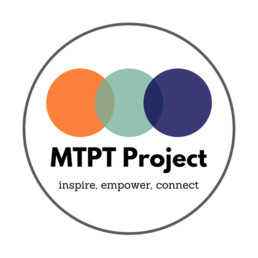
Written by The MTPT Project
The UK’s only charity for parent teachers, with a particular focus on the parental leave and return to work period.
Like many organisations, The MTPT Project responded to the horrific murder of George Floyd in 2020 by sitting up and paying attention to the voices of the global majority colleagues within our community.
In many ways, we were fortunate: four years after our founding as a social media handle and grass roots network, 2020 was also the year that we registered as a charity. We had a near-clean sheet to start from; few ingrained cultural issues within our organisation to unpick, and a whole lot of learning to do.
Even before The MTPT Project was ready for its current growth, it was very clear to me that we had the potential to be part of the problem: if we were empowering colleagues with networking and coaching opportunities over the parental leave period, they were more likely to remain in the profession. They were more likely to remain in the profession happily. They were more likely to have more options open to them. They were more likely to progress into leadership, and increase their earnings.
Our first Diversity and Inclusion report was published in 2020, and stated, “we recognise that if we fail to explicitly engage with a diverse range of teachers, then we will play a part in disadvantaging certain groups within the education system. This is not what we want.” (MTPT, 2020)
By 2023, our commitment had evolved further: “We recognise that by retaining a diverse range of teachers in the education system when they become parents, we are providing our students with powerful role models. In the long term, we therefore also want the demographic of these groups to represent the student body that we serve.” (MTPT, 2023)
As of October 2024, there are a number of things worth celebrating: in our annual Diversity and Inclusion report, we shared that 22.5% of the participants on our 1:1 and group coaching programmes in the previous academic year were colleagues from global majority backgrounds. This is more than the 10% of Black, Asian, Mixed and Chinese teachers in our wider workforce (DfE, 2024), and closer to the 31% of students from these backgrounds (DfE, 2024).
What’s more, following the first Return to Work workshop of this academic year, we got even closer to our 31% target, with 30% of participants attending our live workshop identifying as Asian, Black, from Mixed ethnic backgrounds, or Chinese.
These statistics look great, but why are they important? Well, while maternal identities and experiences may vary by ethnicity and culture, motherhood intersects with many other identity markers.
By ensuring fully inclusive support is available to the mothers in our workforce, we are also providing support for one aspect of a Muslim mother’s identity. Or for a working class mother’s identity. Or for a lesbian mother’s identity.
By increasing representation across our communal events, we are defeating the “only” phenomenon whereby our community members feel welcome, but are still the only Bangladeshi participant in a workshop, or the only colleague who identifies as Mixed race in a group coaching session.
As representation increases, the identity of the organisation changes, along with its impact: this is a place for us, and we too shall benefit from what The MTPT Project has to offer.
This representation has not come about by chance, but rather an explicit resistance to the ease of creating an organisation that simply reflected its Founder, rather than the education system that we serve.
Start with Stats
As an organisation, what are your key measurables? For The MTPT Project, they are: engagement in our coaching programmes, engagement in our workshops, and involvement in our core team. What are your bench-markers for these measurables, and why? For us, we moved away from aiming for the 10% workforce representation because this in itself is a statement of underrepresentation.
Get Educated, Create Space and Listen
Read, listen to podcasts, attend events. Stop talking when others share their lived experiences, and thank them for doing so. If you ask for support, do so judiciously and with humility: it is not our colleagues’ responsibility to teach us, but some may be very happy to be part of your organisation’s journey. Then reflect on what all this means for your organisation, and your core work.
Be What You Can See
We worked explicitly on our visible role modelling. Whether this was using stock images for our event promotion, or seeking out and platforming our case studies. Wherever possible, we favour images of people of colour and we use these across all our channels: promotional fliers, social media, website, newsletters, panel line ups, guests we recommend for podcasts. If we have the choice between an overrepresented face and an underrepresented face, we go with the face we suspect may need an explicit welcome.
Protect and Empower
Cost will always be a barrier in the education sector, and this is only exacerbated by the expense that comes with parenthood. There are lots of other nuanced reasons why someone from whatever counts as a ‘minority group’ in your organisation (one of ours is men!) may not feel as comfortable asking for funding or opportunities as someone from the majority group.
Wherever we can, we remove this barrier by seeking funding specifically for colleagues from global majority backgrounds, or finding other ways to earmark coaching and workshop places. The message is: we have saved a place for you at this table, and it is ready for you when you arrive. It has made a real difference to engagement.
Make Mistakes with Humility and Without Ego
For someone used to privilege (and a people pleaser!), this is easier said than done. I have made mistakes. Things have not worked. Thankfully, I have not caused awful offence along the way but there have been moments of clumsiness borne from ignorance or simply the natural consequence of experimenting and taking a risk. If a strategy doesn’t work, respond with pragmatism: roll with the learning process, reflect and take stock and… do more listening.
References:
MTPT Project, 2020, Diversity and Inclusion Report, https://mcusercontent.com/bda931ab27a93e7c781617948/files/94280f62-c7e3-4ae8-8362-9b20f86dfa17/2020_Diversity_Report.pdf
MTPT Project, 2023, Diversity and Inclusion Report, https://www.mtpt.org.uk/wp-content/uploads/2023/09/2023-Diversity-and-Inclusion-Report.pdf
DfE, 2024, Schools Workforce Census, https://explore-education-statistics.service.gov.uk/find-statistics/school-workforce-in-england
DfE, 2024, School Pupils and their Characteristics, https://explore-education-statistics.service.gov.uk/find-statistics/school-pupils-and-their-characteristics
The theme behind my Children’s book – Zeb, Jet and the Ice-Cream Calamity.
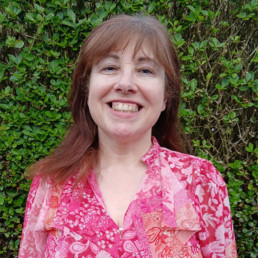
Written by Mirabel Lavelle
Mirabel is a qualified Teaching and Learning Coach, Creative Writing Lecturer, Allergy Awareness Advocate and Author of: Zeb, Jet and the Ice-Cream Calamity. An adventure story aimed at raising food allergy safety awareness. She is also the founder of: writebymirabel.co.uk – Crafting stories: where every voice counts and allergies matter. a website dedicated to the art of crafting stories, especially those that help raise awareness to disability, equity and inclusion.
I am a teacher and grandmother who loves stories. Two of my grandchildren carry auto-injector pens because of food allergies. One day, the older of the two asked me if I would write a story book about allergy. Hence, Jet, Zeb and the Ice-Cream Calamity.
I want to encourage the reader to learn about allergy, to become actively aware of how to safeguard and to include children with food allergies at social events such as Easter egg hunts, trick or treating, and parties without the fear of reaction to food – or worse still – anaphylaxis. I would like the reader to ask:
‘How can we plan a party that children with food allergies can safely enjoy?’
Allergic disease is a disease of the immune system, and it is the fastest growing disease among children in the UK. This condition impairs the sufferer on a day-to-day basis, in many different ways.
Sufferers cannot eat the same food as everyone else unless it has been prepared especially. This has substantial implications. For example, in school during lunchtimes a child may be asked to sit at a separate table because of their food allergies. Outside of school a child may be excluded from social events that centre around food because of a nervous adult.
The culture this creates is that if a child is different in any way, for example by having a dietary requirement, then society will exclude them. New studies are showing certain children, who have experienced anaphylaxis, to display allergy related anxieties and behaviours that are similar to PTSD.
This is why I want to raise food allergy safety awareness. I want to educate so that we can eradicate food cross contamination. This way we can significantly reduce allergy anxiety and promote inclusion at all times.
My story book features a relatable fox cub (Zeb) and playful puppy (Jet) as characters, rather than humans, because of the subject matter. Jet has a food allergy and when Zeb meets Jet, he learns how to be allergy safe aware. This exciting adventure encourages children to want to help Jet by telling others about how to keep him safe. It is an adventure that celebrates diversity, equity and inclusion.
I reinforced my message by creating a joyous song. The chorus shows how to significantly minimise food cross contamination. Children love music, the catchy chorus carries the central and crucial message of the book.
This book invites children to learn about allergy safeguarding by finding out about simple yet responsible behaviour around allergic kids. One example is not to leave wrappers, which may contain allergens, lying around but to bin them responsibly. My message to the reader is about building a society of caring individuals so that no one has to get sick because of the carelessness of others.
I added differentiated tasks to encourage readers to ask more questions about allergy. I want children to have fun whilst they learn. After all, it is through stories and through education and by putting ourselves in someone else’s shoes that we become more understanding of others.
Going into schools to deliver allergy safety events is a very rewarding experience for me because of the positive response from children and staff. They are providing me with a wealth of exciting ideas on how to continue taking my campaign of safe allergy inclusion, forward.
When I first wrote the book, I wanted it to be a key educational resource as well as an entertaining adventure. I aimed to provide schools and communities a point of reference that raises awareness and encourages people to want to know more about allergies and their impact. I needed to ensure that allergy sufferers are included in all activities that everyone their age enjoys. Since taking the book and the presentation into schools and libraries, it continues to inspire a range of immersive activities such as art projects, drama, puppet shows and animation.
This book highlights equity and the tasks that follow the story are focussed on finding ways that are fair and inclusive for Jet. The story affords time to explore feelings, such as Zeb’s feelings after Jet got sick. It creates an opportunity for discussion, for thinking, for empathising, and for bringing about positive change.
Useful Links:
The Natasha Allergy Research Foundation (narf.org.uk)
The Benedict Blythe Foundation Allergy & Education Foundation | Benedict Blythe Foundation
The Sadie Bristow Foundation: Don’t Be Afraid to Be Great
Don’t Assume…
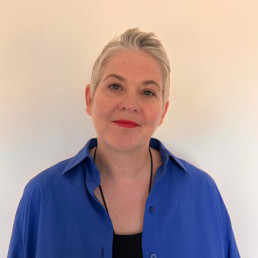
Written by Gerlinde Achenbach
Gerlinde Achenbach is a senior education consultant and former primary headteacher. Her career spans more than 35 years, with over 30 years teaching in schools. Since 2021 she has been supporting schools across the UK with Equity, Diversity & Inclusion, specifically LGBTQ+ inclusion. Her expertise is in leadership and changing school culture.
It is a reality that every LGBTQ+ stakeholder within a school community – child or young person, member of staff, visitor, parent or carer – is on the receiving end of constant heteronormative messaging. This isn’t because schools are not complying with their Public Sector Equality Duty or because they’re not focused on being inclusive. It’s because the world is set up to portray ‘usual’ as heterosexual.
The Oxford languages dictionary defines heteronormativity as: “denoting or relating to a world view that promotes heterosexuality as the normal or preferred sexual orientation.”
Heteronormativity permeates every aspect of school life. It’s in the images on our walls, it’s in the things we say and in what we do. Put simply, there’s an unspoken acceptance that it is ‘the norm’. It confirms for us that heterosexual relationships dominate the human experience. It also reminds us of the relationship between heterosexuality and gender inequity for women and girls through history. We see this every day, where gendered language, stereotyping and imbalanced expectations still dominate our lived experience in the wider world. We like to think we work hard to challenge this in our schools…but are we doing enough?
What can heteronormativity look like in schools?
Environments
- Most images of families show mums and dads. This can be on ‘welcome’ posters or in books and images on display.
- We find ‘corporate’ cartoon images depicting (stereotypical) boy, girl, boy, girl across school spaces.
- Books and literature have not been evaluated in terms of how representative they are of different types of families or identities.
Systems and Policies
- In primary schools we have a habit of assuming (unless told otherwise) that a child has heterosexual parent(s) and that our children will end up in heterosexual relationships.
- We include ‘mother / father’ on application forms and permission slips.
- The words ‘Mr & Mrs’ are on the tips of our tongues when referring to families.
- Our school uniform policies state gendered expectations for girls and boys, even down to shoe styles.
- Our staff dress code does the same.
- We appoint a Head Girl and a Head Boy.
- Our website staff lists denote marital status first – Mrs, Miss, Mr – and we have the same on classroom doors.
Communication and Language
- We welcome our children with “Good morning, boys and girls” and our staff, or parents and carers, with “ladies and gentlemen”.
- The phrase, “Tell / give this to / show / ask your mum and dad” rolls off the tongue for most school staff.
- Staff address girls as ‘darling’, ‘princess’, ‘sweetie’, and boys as ‘mate’, ‘mister’, ‘dude’.
- We hear the terms ‘Headmaster’ and ‘Headmistress’. We address staff as ‘Sir’ and ‘Miss’.
- We hear adults calling for ‘a couple of strong boys’ for certain tasks around school.
Practice and Culture
- We line up our classes in boys’ and girls’ lines, or in a boy, girl formation.
- We seat them on their carpet ladybird places or at tables in the same way.
- We separate and organise children by gender for the most random of reasons and activities.
- We organise role play, construction and crafts with different genders in mind, albeit subconsciously.
- We appoint class names of famous scientists, authors, sports people or musicians where the majority are male (and straight).
- The staff culture feels fixed, exclusive, cliquey and difficult to break into.
- Staff congratulate themselves on the way they have always done things.
I have deliberately not set out here inclusive versions of the above examples. They are a starting point for whole staff thinking and they’re guaranteed to promote worthwhile discussion. It’s important in our schools to do the hard work required, challenge heteronormativity in all its guises and ask the following questions:
- Might a child with same-sex parents feel quietly excluded in our school?
- Will their parents feel welcome?
- How about a child who has lost a parent, or a child who is care-experienced?
- Have we removed assumptions in all our interactions with families?
- Can a member of staff, whatever their sexual orientation or identity, can be their authentic self at work?
- Are our language and expectations truly gender-inclusive?
- Is our inclusive approach understood by all groups of staff in their varying roles across school?
Why does this matter? It matters because of the need for us all to feel we belong in the places where we, or our loved ones, spend a good deal of time. Marian Wright Edelman coined the phrase, ‘You can’t be what you can’t see’, and this matters if you rarely see yourself (child or adult) or your family represented in your school. Representation is validation.
It matters because subliminal messages such as those received (through unthinking words, gendered phrases and activities defined by gender) by girls and women, or by those for whom gender is not fixed or for whom gender causes anguish, can be damaging and self-fulfilling over time.
Be where you are embraced, not celebrated: exploring use of language when developing an equality ethos
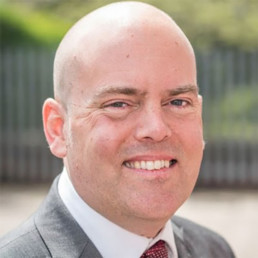
Written by Andrew Moffat
Andrew Moffat has been teaching for 25 years and is currently PD Lead at Excelsior MAT. He is the author of “No Outsiders in our school: Teaching the Equality Act in Primary Schools” and “No Outsiders: everyone different, everyone welcome”. In 2017 Andrew was awarded a MBE for services to equality and diversity in education and in 2019 he was listed as a top ten finalist in the Varkey Foundation Global Teacher Prize.
Can we talk about the word celebrate?
I am a big supporter of Diverse Educators, but the use of the word celebrate in the tag line I think is not needed, in fact I believe it could be detrimental to our aims. “Be where you are celebrated…” Really? Do I need to be celebrated? For what? Being male, being gay, wearing glasses? Really?
Diverse Educators are not alone using this word; I used it in the past. My first resource on teaching LGBT equality in 2006, “Challenging homophobia in Primary Schools” (published by Coventry City Council in 2007 and by Birmingham City Council in 2010) states in the introduction, “Every child benefits from an ethos of mutual respect and a celebration of who they are.” (p2) and later, “Children need to understand that the world is full of different people who like different things and we should celebrate that fact with them.”(p5)
In my first properly published book, “No Outsiders: Teaching the Equality Act in primary schools” (2015) I state, “We have to be delivering a curriculum where diversity and difference are celebrated.”
But by 2020 I had changed my mind. I was trying to step away from the use of the word celebrate trying to find alternative words. Why? Because I was facing significant challenges to my equality work from a religious perspective, and I had to find a way to bring people on board.
Let me explain…
2019 was a very difficult year. RSE ruined my life! Everything was going fine until new RSE guidance from the DfE suddenly put LGBT+ education into the spotlight. Despite my school successfully running No Outsiders for four years previously to 2019, suddenly there were huge protests outside my school against it. “Stop sexualising children!” “My child, my choice!” “Stop indoctrination now!” “Stop No Outsiders,” read the placards. The protests lasted for 6 months and then fizzled out. Today, that school runs No Outsiders successfully and it’s like the protests never happened. A 2022 Ofsted report for the school opens with the line, “Children say there are no outsiders here and that everyone is welcome.”
During the protests, I received a letter from Mike Smith, a vicar from Cheshire who was also a chair of governors at a primary school. Mike was writing to express support but in the letter, he also mentioned the language I was using. Mike pointed out that I was asking schools to celebrate diversity and that meant in turn, asking schools to celebrate LGBT equality. As a Christian, Mike argued, he could not ‘celebrate’ LGBT people as he believes marriage is fundamentally between a man and woman. However, he could tolerate LGBT people; he wanted to be an ally. Mike asked me to consider using the word tolerate more, rather than celebrate.
Hmmm….
My initial reaction was absolutely not! I have never liked the word tolerate. Tolerate is word used when you are putting up with something; a buzzing noise, rain. I am not going to teach children to tolerate each other. It feels so wrong.
But I was in the middle of this mess at the time. People shouting at me from all sides. And maybe stopping and listening is the best policy. So, I got in contact with Mike and we talked. Mike was brilliant. He really shifted my thinking on this as we came together from two very different places and tried to find a way through.
Mike asked me, “Do you need to celebrate to feel accepted?” It’s a good question. I’ve worked in schools for nearly 30 years, and we’ve always blithely said, “We celebrate diversity,” whatever school I’ve been in. But let’s just step back for a moment and ask what that looks like. How do you stop that being tokenistic? ‘Ooh it’s pride month – get the rainbow flags out!’
The other problem here is that we don’t live in that rose tinted world. Homophobia exists, racism exists, misogyny exists. There are some people in our communities who simply do not wish to celebrate Pride month or celebrate gay people existing, and they should not be forced to. As an adult, you are not forced to join a pride parade; you cannot stop it happening and there are laws that protect the existence of LGBT people, but you do not have to celebrate that. You just need to accept it happens.
Should schools be celebrating LGBT+ people? If we are truly preparing children for life in modern Britain, shouldn’t we instead be teaching children that Pride exists, asking why it exists and recognising that some people join pride parades as a means of protest, some as a means of celebration, and some people don’t agree with it. Children should form their own opinions. As long as a child is not othering someone, judging and saying they are wrong for being who they are, I think it’s ok for a child to choose not to celebrate pride. Pride exists and will be celebrated whether that child joins in or not. You could argue a debate about Pride where children are encouraged to disagree, only strengthens the arguments for Pride existing!
There was a perception at the school where we had protests that we were forcing children of faith to celebrate LGBT equality. I don’t think we were doing that, but perception among parents is everything in schools, isn’t it. After conversations with Mike, together we came up with an alternative word to celebrate which was “accept”. At my school we spoke to parents about removing the word celebrate and we changed displays from “We celebrate diversity” to “We are diverse” or “We accept each other’s differences”. I really tried to show that I was listening and changing my language and the parents appreciated my efforts. I wrote a chapter in the second No Outsiders book “All different, all welcome” (2020) called “Tolerate, celebrate, accept” where I explained what I was trying to do. Lots of schools, particularly where there was a large faith cohort, told me they liked this strategy.
But I was never happy with the word “Accept”. I was constantly searching for an alternative word and then it came – “Embrace”. I think “We embrace diversity” is fantastic. You can embrace something without necessarily agreeing with it. You don’t have to celebrate it.
So, since 2021, embrace is the word I have been using. In my own school hall we have a great display (see below) with the words “We are different – we belong here” which is perfect. I think celebrating can be triggering for some people, particularly when talking about LGBTQ+ and faith, so I have simply removed it.
I always discuss this in my training, and I always say, “Of course, I may be wrong about this!” I have been wrong in the past and maybe I’m wrong here, I think it’s certainly worth a discussion and I may change my mind in future. I also want to make clear that I absolutely celebrate Pride every year myself. I have been to three Prides this year and I love them. I love being gay and I’m very proud to be gay and to be out to people. But I don’t need you to celebrate me. I do want you to accept me without judgement, but I don’t need a clap!
Find out more about No Outsiders: www.no-outsiders.com
Find our new No Outsiders scheme of work for 2024 “No Outsiders: We belong here” by Andrew Moffat (Speechmark, 2024)
Watch the film of Mike Smith talking about our conversations and language https://www.youtube.com/watch?v=1PeUmCprYfo&t=2s

